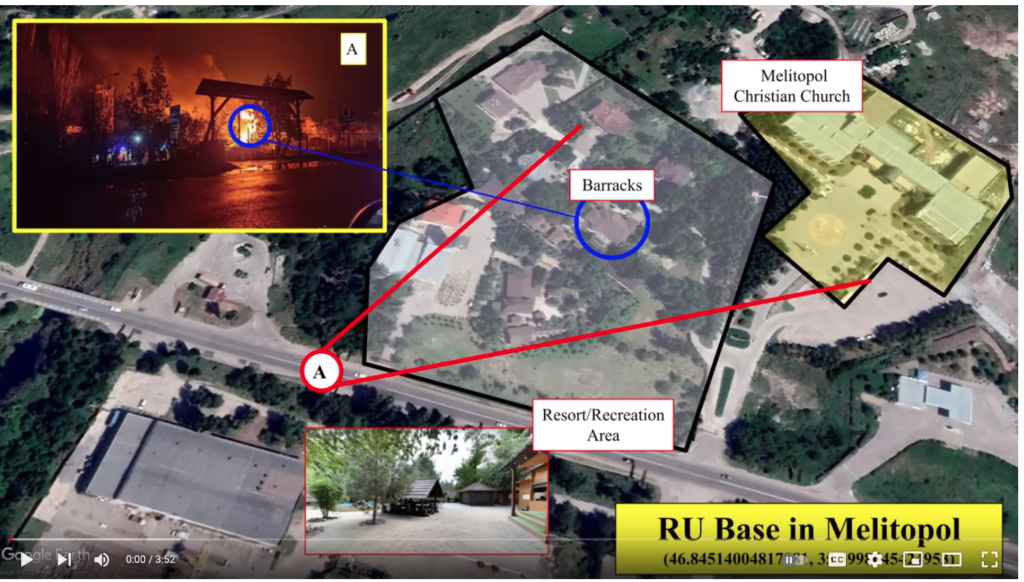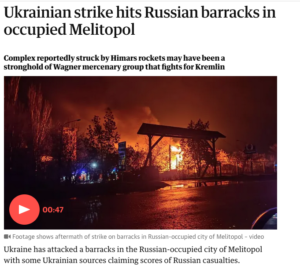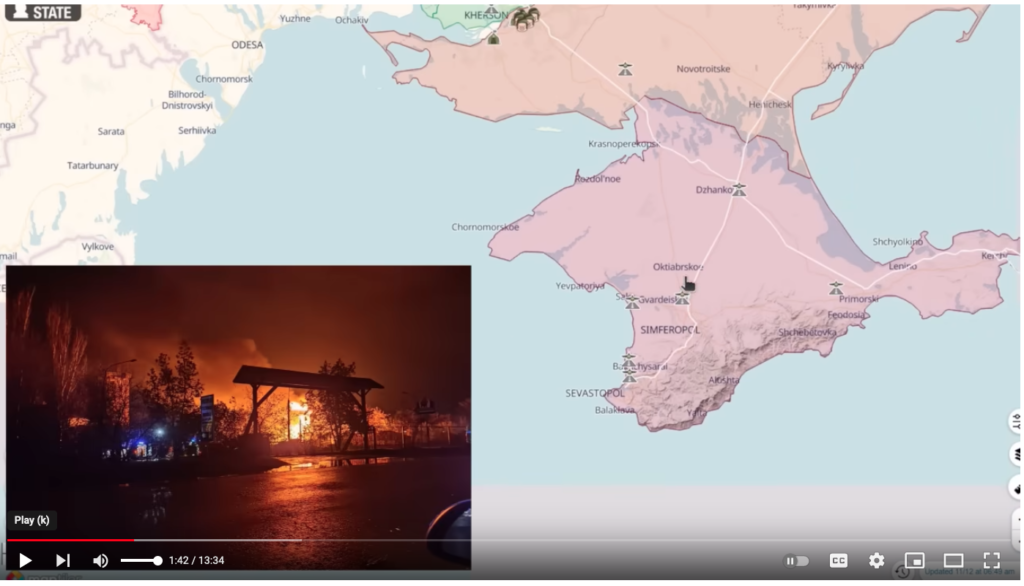Given the cutoff from SWIFT, the widespread economic sanctions, and the huge pullout of Western firms from Russia in the wake of their invasion of Ukraine, I would have expected more signs of the widely predicted economic decline on the part of Russia than we’ve been seeing.
However, this report from the Yale Chief Executive Leadership Institute (CELI) says that the sanctions are indeed crippling Russia’s economy.
Some skepticism is probably in order, as CELI’s head, Jeffrey A. Sonnenfeld, for all his talk of advising both Trump and Biden, is a Biden donor, and we all know the great lengths our political elites to lie in order to cover up the Biden Administration’s many manifest failures. But reading through the report there seems to be a substantial amount of evidence to support the thesis.
The summary:
As the Russian invasion of Ukraine enters into its fifth month, a common narrative has emerged that the unity of the world in standing up to Russia has somehow devolved into a “war of economic attrition which is taking its toll on the west”, given the supposed “resilience” and even “prosperity” of the Russian economy. This is simply untrue – and a reflection of widely held but factually incorrect misunderstandings over how the Russian economy is actually holding up amidst the exodus of over 1,000 global companies and international sanctions.
That these misunderstandings persist is not surprising. Since the invasion, the Kremlin’s economic releases have become increasingly cherry-picked, selectively tossing out unfavorable metrics while releasing only those that are more favorable. These Putin-selected statistics are then carelessly trumpeted across media and used by reams of well-meaning but careless experts in building out forecasts which are excessively, unrealistically favorable to the Kremlin…
Our team of experts, using Russian language and unconventional data sources including high frequency consumer data, cross-channel checks, releases from Russia’s international trade partners, and data mining of complex shipping data, have released one of the first comprehensive economic analyses measuring Russian current economic activity five months into the invasion, and assessing Russia’s economic outlook.
From our analysis, it becomes clear: business retreats and sanctions are crippling the Russian economy, in the short-term, and the long-term. We tackle a wide range of common misperceptions – and shed light on what is actually going on inside Russia.
Here are their main points (generic paper reference verbiage elided):
Russia’s strategic positioning as a commodities exporter has irrevocably deteriorated, as it now deals from a position of weakness with the loss of its erstwhile main markets, and faces steep challenges executing a “pivot to Asia” with non-fungible exports such as piped gas…
Despite some lingering supply chain leakiness, Russian imports have largely collapsed, and the country faces stark challenges securing crucial inputs, parts, and technology from hesitant trade partners, leading to widespread supply shortages within its domestic economy…
Despite Putin’s delusions of self-sufficiency and import substitution, Russian domestic production has come to a complete standstill with no capacity to replace lost businesses, products and talent; the hollowing out of Russia’s domestic innovation and production base has led to soaring prices and consumer angst…
As a result of the business retreat, Russia has lost companies representing ~40% of its GDP, reversing nearly all of three decades’ worth of foreign investment and buttressing unprecedented simultaneous capital and population flight in a mass exodus of Russia’s economic base…
Putin is resorting to patently unsustainable, dramatic fiscal and monetary intervention to smooth over these structural economic weaknesses, which has already sent his government budget into deficit for the first time in years and drained his foreign reserves even with high energy prices – and Kremlin finances are in much, much more dire straits than conventionally understood…
Russian domestic financial markets, as an indicator of both present conditions and future outlook, are the worst performing markets in the entire world this year despite strict capital controls, and have priced in sustained, persistent weakness within the economy with liquidity and credit contracting – in addition to Russia being substantively cut off from international financial markets, limiting its ability to tap into pools of capital needed for the revitalization of its crippled economy…
Looking ahead, there is no path out of economic oblivion for Russia as long as the allied countries remain unified in maintaining and increasing sanctions pressure against Russia…
I believe the first part of the first point is too speculative (“Rising Prices Mask Irreversible Deterioration in Long-Term Strategic Positioning”) and forward-looking to be worth examining. Russia isn’t worried about long-term positioning if it can use its gas pipeline leverage to crack the sanctions regime against it this year. The second “pivot to Asia difficulties” part is something I’ve covered here.
First they cover why you can’t trust Russian statistics (duh):
The Kremlin’s economic releases are becoming increasingly cherry-picked; partial, and incomplete, selectively tossing out unfavorable statistics while keeping favorable statistics. The Russian government is no longer disclosing certain economic indicators which prior to the war were updated on a monthly basis, including all foreign trade data, including those relating to exports and imports, particularly with Europe; oil and gas monthly output data; commodity export quantities; capital inflows and outflows; financial statements of major companies, which used to be released on a mandatory basis by companies themselves; central bank monetary base data; foreign direct investment data; and lending and loan origination data, and other data related to the availability of credit.
The fact the data is so bad they’re not even trying to alter or spin it suggests things are pretty bad.
Even Rosaviatsiya, the federal air transport agency, abruptly ceased publishing data on airline and airport passenger volumes. As a measure of comparison, prior to the war, the only economic data which have historically been classified and quarantined by the Russian government are sensitive metrics related to the trade of military goods, aircraft, and nuclear materials.
Although the Kremlin explains away its newfound desperate obfuscation of its revenue and spending data and other macroeconomic indicators of overall economic health under the guise of “minimizing the risk of the imposition of additional sanctions”, what little data has trickled out from the Kremlin suggests the real reason may lie in the fact these statistics are unlikely to be positive for the Kremlin, and getting worse by the day. For example, total oil and gas revenues dropped by more than half in May from the month before, by the Kremlin’s own numbers. As one economist wrote, “it’s likely that the Kremlin is afraid of publishing data that reveal the full scale of the economy’s collapse”.
Second, even those favorable statistics which are released are questionable if not downright dubious when measured against cross-channel checks, verification against alternative benchmarks and given the political pressure the Kremlin has exerted to corrupt statistical integrity. Indeed, the Kremlin has a long history of fudging official economic statistics, even prior to the invasion. Putin has on several occasions shunted aside heads of Rosstat who produced economic statistics which were not to his liking, and he personally transferred control of the agency to political appointees at the Economic Ministry, depriving the agency of its prior status as an independent branch of government free from political influence. Outside observers ranging from international organizations to foreign investors regularly sound alarm bells over “concerns about the reliability and consistency” of the Kremlin’s economic releases, especially given the propensity of Kremlin economists for “switching to new methodologies” with alarming frequency – many instances of which are not even disclosed. Concerns over meddlesome political interference must be given even more weight now that Putin appointed Sergei Galkin, the former Deputy Economic Minister and the most blatantly political pick in recent history as head of Rosstat in May.
Third, and as mentioned briefly previously, almost all rosy projections and forecasts are irrationally extrapolating economic releases from the early days of the post-invasion period, when sanctions and the business retreat had not taken full effect, rather than the most recent, up-to-date numbers from recent weeks and months – partially due to the fact the Kremlin stopped releasing updated numbers, constraining the availability of datasets for economic researchers to draw upon. For example, many alarming forecasts projecting strong revenue from energy exports were based on the last available official export data from March, even though many business withdrawals and sanctions on energy had not yet taken effect, with orders placed prior to the invasion still being delivered.
Take, as one instance of many, one widely cited study by Bloomberg decrying Russia’s surge in revenue from energy exports. The authors wrote: “even with some countries halting or phasing out energy purchases, Russia’s oil-and-gas revenue will be about $285 billion this year, according to estimates from Bloomberg Economics based on Economy Ministry projections. That would exceed the 2021 figure by more than one-fifth”. No doubt, Russia has continued to draw significant revenue from energy exports – a complex topic which we analyze in-depth in the sections below.
But this specific Bloomberg analysis projected Russia’s 2022 energy export revenues based on its revenue through March of 2022 as disclosed by the Kremlin, even though the Kremlin has belatedly acknowledged that energy export revenues in May and June have diminished significantly. In fact, only after a long and unexplained delay did the Kremlin finally disclose that total oil and gas revenues dropped by more than half in May from prior months, by the Kremlin’s own numbers – along with the declaration that the Kremlin would cease releasing any new oil and gas revenues from that point on. Nevertheless, the misleading Bloomberg forecast carelessly extrapolating out initial energy export volumes into the rest of the year was then repeated by leading voices including Fareed Zakaria and others in proving the supposed “resilience” and even “prosperity” of the Russian economy.
On the collapse of Russian imports:
Imports consist of ~20% of Russian GDP, and the domestic economy is largely reliant on imports across industries and across the value chain with few exceptions, despite Putin’s bellicose delusions of total self-sufficiency.
Snip.
By far and large, the flow of imports into Russia has drastically slowed in the months since the invasion. A review of trade data from Russia’s top trade partners – since, again, the Kremlin is no longer releasing its own import data – suggests that Russian imports fell by upwards of ~50% in the initial months following the invasion.
And China isn’t replacing western countries as a source of imports.
In the initial days of the Russian Business Retreat, when hundreds of western businesses rushed to exit Russia, the authors – who were deluged with media inquiries given the prominence of the Yale CELI List of Companies curtailing operations in Russia – were frequently asked whether Chinese companies would rush to fill the spots vacated by western businesses. Many naïve observers cynically remarked that the Business Retreat would be futile, as Chinese companies would relish the opportunity to do more business in Russia, and the Russian economy would barely miss a beat. This is not at all what has played out – and quite to the contrary.
In fact, according to recent monthly releases from the Customs General Administration of China, which maintains detailed Chinese trade data with detailed breakdowns of exports to individual trade partners, Chinese exports to Russia plummeted by 50% from the start of the year to April, falling from over $8 billion monthly at the end of 2021 to under $4 billion in April. This aligns with our anecdotal observations of several Chinese banks withdrawing all credit and financing from Russia following the start of the invasion, including ICBC, the New Development Bank, and the Asian Infrastructure Investment Bank, in addition to energy giants such as Sinochem suspending all Russian investments and joint ventures.
The explanation for China’s reticence, once again, lies in the asymmetric nature of Russia’s relationships with its trading partners. Even on imports, it is clear that Russia needs its trade partners far more than its trade partners need Russia – and the power dynamic is not even close to being balanced.
This imbalance is put into stark relief when the proportion of imports Russia draws from China is compared to the proportion of exports China sends to Russia. Russia is not even in the top ten destinations for Chinese exports; in 2021 alone, China exported over $500 billion in goods and services to its largest trade partner, the United States, representing ten times the amount of goods it sent to Russia ($72 billion). On the other hand, China represents Russia’s largest source of imports by far; in fact, the $72 billion in imports Russia draws from China is nearly three times the amount of imports Russia draws from its second largest partner, Germany ($27 billion), and five times the amount of imports Russia draws from its third largest partner, the United States.
Given the extremely minor proportion of Chinese exports going to Russia vis-à-vis China’s trading relationship with the United States and Europe, clearly most Chinese companies are much more wary of losing access to US and European markets by running afoul of US sanctions and crossing US companies than they are of losing whatever erstwhile market share they had in Russia. The dangers of losing access to US technology are already readily apparent from China’s point of view. When the US imposed export restrictions on Chinese telecom companies Huawei and ZTE in 2020, they were unable to source advanced microchips and saw a massive reduction in their chip-dependent smartphone businesses – a fate which no Chinese company wants to suffer by running afoul of US sanctions related to Russia.
China is the most prominent example, but other trade partners have been just as reticent to export to Russia. In fact, it appears that exports to Russia from sanctioning and non-sanctioning countries have collapsed at a roughly comparable rate in the months following the invasion. One analysis found that non-sanctioning countries saw exports to Russia fall by an average of 40%, while sanctioning countries saw exports fall an average of 60%, reflecting the disadvantaged economic position Russia finds itself vis-à-vis practically all its trade partners regardless of political rhetoric
Snip.
One survey done by the Central Bank of Russia found that well over two-thirds of surveyed companies experienced import problems, and manufacturers, in particular, reported a shortage of raw materials, parts, and components. Unsurprisingly, the focus has shifted towards import substitution – a topic analyzed in closer detail in Section IV. But in short, this has not been fruitful. Despite Russian companies’ desperate efforts to find alternative production and re-orient supply chains towards domestic substitutes, according to a survey by Russia’s Gaidar Institute for Economic Policy, a whopping 81% of manufacturers said they could not find any Russian versions of imported products they need, and more than half were “highly dissatisfied” with the quality of homegrown production even when domestic substitutes could be sourced.
On to the failure to find adequate domestic substitutes. I’m going to skip over a lot of the stuff I don’t really give a rat’s ass about (radical declines in new car sales) as it’s not particularly important except as evidence of aggregate demand destruction. Others are much more surprising: Fruits and vegetables and fish production are down as well, despite Russia supposedly being the country that can supply all its own fertilizer needs. (And pesticides and fertilizers are also down.)
When domestic industrial production is measured by volume rather than value added, cross- filtered against a more granular breakdown by sub-industry, the picture becomes even bleaker suggesting large-scale shutdowns of the Russian industrial base, which is evidently operating at a fraction of its usual capacity. Industrial production volume in crucial industries such as appliances, railways, steel, textiles, batteries, apparel, and rubber fell by well over 20%, while other sub-industries such as electronics, sports, furniture, jewelry, fertilizers, and fishing fell in excess of 10%.
And despite Putin’s rallying cries of self-sufficiency, all of these industries share a crucial similarity: they simply cannot replace imported parts and components that Russia lacks the technological prowess to make, and illicit, shadowy parallel imports can only go so far. For example, the Russian tank producer Uralvagonzavod has furloughed workers based on input shortages.
So much for the Russian trolls that claim Uralvagonzavod’s is still cranking out tanks unimpeded!
Russian production of tanks, missiles and other equipment relies on imported microchips and precision components that simply cannot be sourced right now. Likewise, Russia’s Caspian pipeline has had challenges finding spare parts related to the US and EU’s ban on exports related to gas liquefaction. Each of these supply disruptions – which cannot be replaced by import substitution or parallel imports – leads to production shutdowns which then ripple across the entire supply chain, bringing various ancillary products and services into a simultaneous standstill.
The breadth of this industrial production slowdown across the Russian economy is further worsened by a rapidly deteriorating outlook for new purchases and orders. A reading of the Russian Purchasing Managers’ Index (PMI) – which captures how purchasing managers are viewing the economy – shows that new orders have plunged across the board, both in terms of domestic Russian orders as well as Russian orders for foreign products and foreign orders of Russian products. Clearly, purchasing managers want nothing to do with placing new orders until the geopolitical environment stabilizes. Likewise, PMIs highlight that inventories have dropped and delivery times have increased in the context of widespread supply-chain problems, so even if new orders were to be placed, the fulfillment of those orders would continue to pose steep challenges to Russian domestic production.
Also hurting Russia is the fact that over 1,000 global companies have curtailed operations there. (Though some still remain; why the hell is Cloudflare, Carl’s Jr. and Sbarro still doing business there?)
When the list was first published the week of February 28, only several dozen companies had announced their departure from Russia. In the two months since, this list of companies staying/leaving Russia has already garnered significant attention for its role in helping catalyze the mass corporate exodus from Russia, with widespread media coverage and circulation across company boardrooms, policymaker circles, and other communities of concerned citizens across the world.
Based on the authors’ proprietary database tracking the retreats of over 1,000 companies, our researchers found that across all these 1,000 companies aggregated together, the value of the Russian revenue represented by these companies and the value of these companies’ investments in Russia together exceed $600 billion – a startling figure representing approximately 40% of Russia’s GDP. We further found that these companies, in total, employ Russian local staff of well over 1 million individuals. The value of these companies’ investment in Russia represents the lion’s share of all accumulated, active foreign investment in Russia since the fall of the Soviet Union – meaning the retreat of well over 1,000 companies in the span of three months has almost single-handedly reversed three decades’ worth of Russian economic integration with the rest of the world, while undoing years of progress made by Russian business and political leaders in attracting greater foreign investment into Russia.
To be sure, this is not to say that the GDP of Russia will contract 40% overnight. Many of the 1,000+ businesses who have curtailed operations in Russia are still in the process of winding down their operation, meaning it will take months if not even years to feel the full impact of their withdrawal. Other companies from this list of 1,000+ have already divested or sold their Russian businesses to local Russian operators, which means that even though these businesses will lack western technical and financial support and know-how and deteriorate in the long-run, in the short-term, they will still continue to operate to some extent and thus cannot be written off from Russian GDP immediately. There are also some companies which continue some operations in Russia while pulling out of other operations, so any hit to Russian GDP from these companies would be partial rather than total. It is impossible to capture the full economic impact of the Russian business retreat as many of the most devastating consequences will be felt years from now -with long-term structural losses to the Russian economy beyond any single dollar figure of lost revenue or lost investment. Nevertheless, the fact that the 1,000+ companies that have curtailed operations represent such a high proportion of Russia’s GDP – 40% – signifies the importance of these economies to the Russian economy prior to the war, and how the Russian economy must now undergo dramatic, forced transformations with these companies pulling out, as amplified throughout this paper.
Some might argue that the companies that curtailed operations in Russia were forced to incur a short-term loss in Russian revenue and investment – despite the fact the impact on Russia is more painful in both the short-term and the long-term – but it is not even true to say that the companies leaving Russia incurred any losses. In fact, rather than penalizing companies for leaving Russia, in a separate study, we found that foreign investors by far and large rewarded companies for removing the risk overhang associated with exposure to Russia – that the value of aggregate stock market gained since the start of the invasion for companies that have left Russia far outweigh the value of Russian asset divestitures and lost Russian revenue, which for most multinational corporations, represented a small fraction of total revenue to start with – no more than 1-2% in most cases. Thus, clearly the loss of 1,000+ companies has been borne solely by Russia – in both the short-term and the long-term – while leaving Russia actually benefited companies.
Not to mention the brain drain and capital flight:
Unsurprisingly, the Russian business retreat has coincided with rapid “brain-drain” as talented, educated Russians flee the country in droves. It is impossible to assess the exact number of Russians who have left Russia permanently since the outset of the invasion, but most estimates peg the number as no less than five hundred thousand – with the vast majority being highly-educated and highly-skilled workers in competitive industries such as technology. The mass exodus of skilled Russian natives is further amplified by the forcible expulsion of a not-insignificant population of western expatriates working in Russia. These workers – who understand the structural challenges facing the Russian economy and technical hurdles obstructing Putin’s vows of self-sufficiency and import substitution – are joined by many of Russia’s few remaining high-net-worth and ultra-high-net-worth individuals, who understand that capital controls, taxes, the business and investment climate, and government restrictions are only likely to become worse in the years ahead, particularly for those holding financial capital. By one measure, 15,000 ultra-high-net-worth individuals have fled Russia since the invasion began, which would represent 20% of the population of Russia’s ultra-high-net-worth individuals at the outset of the war. These Russians, as the holders of significant capital, seek the safety, security, and stability of western financial markets, especially as Russia’s access to those markets shrinks.
These high net worth individuals are bringing their wealth with them when they flee, contributing to soaring private capital outflows, even by the Central Bank of Russia’s own admission. The official level of capital outflows indicated by the Bank of Russia in Q1, nearly $70 billion USD, is likely to be a gross underestimate of the actual level of capital outflows, given strict capital controls implemented by the Kremlin restricting the amount of wealth Russian citizens can transfer out of the country, particularly foreign-currency denominated wealth. Any additional capital outflows which have skirted these capital controls are unlikely to have been captured by the Central Bank of Russia’s gauge, and indeed, by all anecdotal reports, wealthy Russians are flocking for safe havens in droves.
Next up, just why we haven’t yet seen an actual collapse: unsustainable fiscal stimulus and capital controls.
As global businesses swarmed for the exits and after the implementation of devastating sanctions by the US and EU in the early weeks following the invasion, many western economists and policymakers had unrealistic expectations that the Russian economy may collapse or that a financial crisis might take hold. Sanction regimes very rarely cause instantaneous financial crises or economic collapses; rather, they tend to be longer-duration tools designed to structurally weaken a nation’s economy while isolating it from global markets. Indeed, as this paper has shown, the impact of business retreats and sanctions on the Russian economy has been nothing short of catastrophic, eroding the Russian economy’s competitiveness while exacerbating internal structural weaknesses.
But for those who expected a more rapid collapse in the Russian economy, and who were shocked this did not occur – much of the reason the Russian economy proved marginally more resilient than initially expected has to do with the unprecedented and unsustainable fiscal and monetary response initiated by the Kremlin. A little-understood but critically important component of Russia’s economic journey since the outset of the invasion, the Kremlin’s fiscal and monetary response has largely averted a credit/liquidity squeeze, which could have induced a financial panic, while propping up the economic livelihoods of many core constituencies of the Putin regime, ranging from state owned enterprises to pensioners and retirees – rescuing them from sudden economic catastrophe.
One of the best case studies for how, through massive and unsustainable government intervention, the Kremlin has been able to temporarily prop up the Russian economy also happens to be one of Putin’s favorite propaganda talking points: the appreciation of the ruble, which is now the strongest-performing currency this year by some measures. Overnight, as soon as the invasion commenced, the exchange rate for the ruble relative to the dollar jumped from ~75 to ~110 – but the Kremlin immediately announced a rigorous set of capital controls on the ruble including a blanket ban on citizens sending money to bank accounts abroad and foreign money transfers; a suspension on cash withdrawals from dollar banking accounts beyond $10,000 per person; a mandate for all exporters to exchange 80% of foreign currency earnings for rubles; a suspension of direct dollar conversions for individuals with ruble-denominated banking accounts; a suspension of domestic lending in foreign currencies; a suspension of dollar sales across domestic banks; a mandate that companies pay foreign-denominated debt in rubles; and encouragement of individuals to redeem dollars for rubles out of patriotic duty. These restrictive capital controls – which rank amongst the most restrictive of any government in the world – immediately made it effectively impossible for domestic Russians to purchase dollars legally or even access a majority of their dollar deposits, while artificially inflating demand for rubles through forced purchases by major exporters. These capital controls, which have only weakened slightly in the four months since the outset of the invasion, continue to prop up the ruble’s official exchange rate with artificial strength across onshore and offshore markets.
However, the official exchange rate given the presence of such draconian capital controls can be misleading – as the ruble is, unsurprisingly, trading at dramatically diminished volumes compared to pre-invasion on low liquidity. By many reports, much of this erstwhile trading has migrated to unofficial ruble black markets, where the spread between the official exchange rate and the actual exchange rate is equally dramatic – upwards of 20% to 100% higher than the official exchange rate, in some cases, given a shortage of obtainable, liquid dollars within Russia. Even the Bank of Russia has admitted that the exchange rate is a reflection more of government policies and a blunt expression of the country’s trade balance rather than freely tradeable liquid FX markets.
The Kremlin’s implementation of capital controls pales in comparison to the unsustainable full-scale fiscal and monetary stimulus launched over the last few months, stretching to every corner of the Russian economy. That the Kremlin would flood the Russian economy with such a deluge of Kremlin-initiated spending was far from certain in the initial days of the war. Initial attempts by the Kremlin to intervene in the economy when the invasion started were marked by relative restraint, defined by measures such as shutting down trading on the Moscow Stock Exchange and suspending measures intended to be largely transitory in nature. But when it became apparent that western sanctions were not being lifted and that the Russian economy would not go back to “normal” anytime soon, Putin announced escalating waves of fiscal and monetary stimulus targeted at easing the economic pain faced by individuals and companies. These measures included subsidized loans and loan payment assistance to companies; transfer payments to affected industries; subsidized mortgages and mortgage payment assistance; increases in direct payments to individuals including families, pregnant women, government employees, pensioners, military, low-income; recapitalization of companies by the National Wealth Fund, the sovereign wealth fund of Russia; nationalization and recapitalization of certain companies and assets; subsidized credit forgiveness approaching a debt jubilee; subsidized protection from bankruptcy and foreclosure; drawdowns from the National Wealth Fund for state expenditures; and subsidized infrastructure development – to name only a few.
The ultimate scale of these relief expenditures is still unclear as they are currently ongoing, but initial signs point towards a massive, unprecedented magnitude of spending. By the Central Bank of Russia’s own data releases, the Russian money supply – M2, which includes cash, checking deposits, and cash-convertible proxies of store-holders of value – ballooned by nearly two times from the start of the year through June.
A good thing that doubling your money supply almost overnight can’t possibly have any negative repercussions!
Putin’s remaining FX reserves are decreasing at an alarming pace, as Russian FX reserves have declined by $75 billion since the start of the war – a rate which, if annualized, suggests these reserves may be spent down within a few years’ time. Critics point out that official FX reserves of the central bank technically can only decrease, not increase, due to international sanctions placed on the central bank, and suggest that non-sanctioned financial institutions such as Gazprombank can still accumulate FX reserves in place of the central bank. While this may be true technically, there is simultaneously no evidence to suggest that Gazprombank is actually accumulating any sizable reserves, considering the distress facing its own loan book, pressure to fund increasing amounts of infrastructure loans and the fact that Gazprombank has been accused of being the conduit through which the Kremlin indirectly transfers the regular military pay and combat bonuses of Russian soldiers fighting in Ukraine. These signs point toward Gazprombank simply channeling massive government expenditures outward with the government spending down immediately rather than stashing away government revenues for later.
Snip.
The challenges facing Russia’s sovereign financing are exacerbated by Russia’s newfound lack of access to international capital markets. With Russia’s first default since 1917 on its sovereign debt, Russia is now frozen out of international debt issuances for years to come and unable to tap into traditional sovereign financing across international capital pools. Russia can continue to issue its version of domestic bonds, known as OFZs, but the total capital pool available within Russia domestically is a fraction of the financing needed to sustain these levels of spending by the Russian government over an entire economic cycle. And indeed, the Finance Minister has confirmed that Russia is not raising debt to pay for its fiscal program and has no plans to do so in the near-term.
“Financial Markets Pricing In Sustained Weakness In Real Economy with Liquidity and Credit Contracting.” Yeah, I’m just going to skip over all that. Just note that not even Russians want to buy Russian real estate or stock.
Let’s jump to the conclusion. After reiterating the main points:
Looking ahead, there is no path out of economic oblivion for Russia as long as the allied countries remain unified in maintaining and increasing sanctions pressure against Russia.
Is Russia’s economy collapsing? Not quite yet. Actual economic collapse is what we’re seeing in Sri Lanka: You can’t buy food, you can’t buy fuel, and you can’t keep the lights on. Russia isn’t there yet. However, the authors do present compelling evidence that Russia’s economy is contracting quite dramatically, and will continue to get worse as long as the war and sanctions continue.





